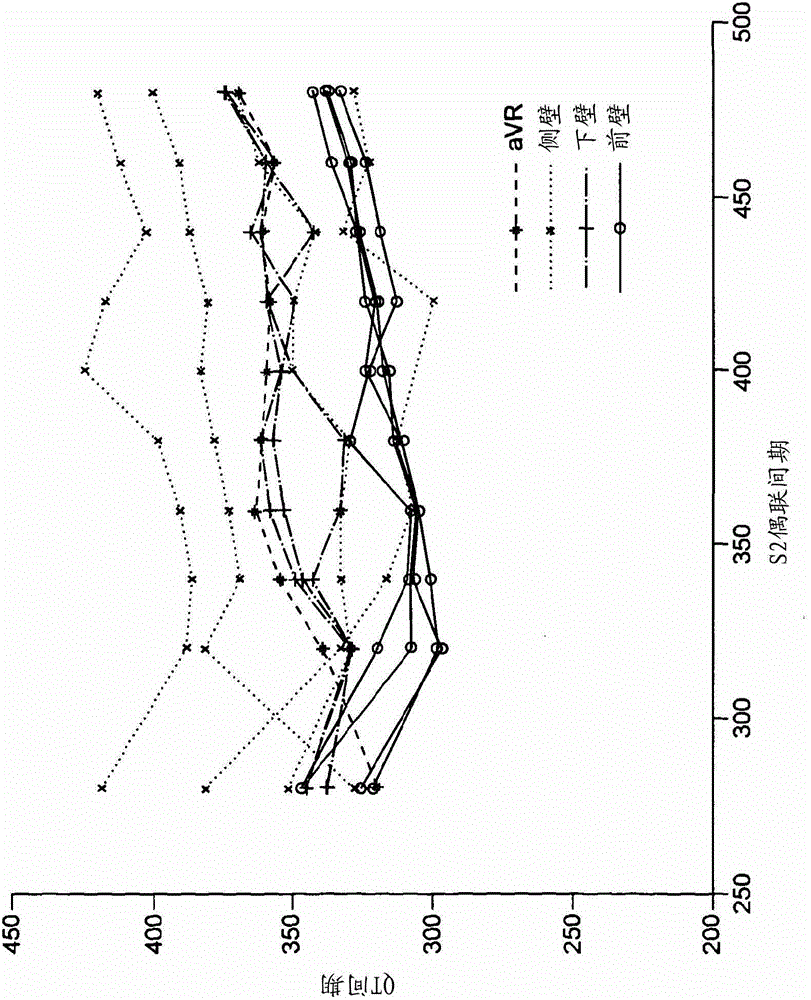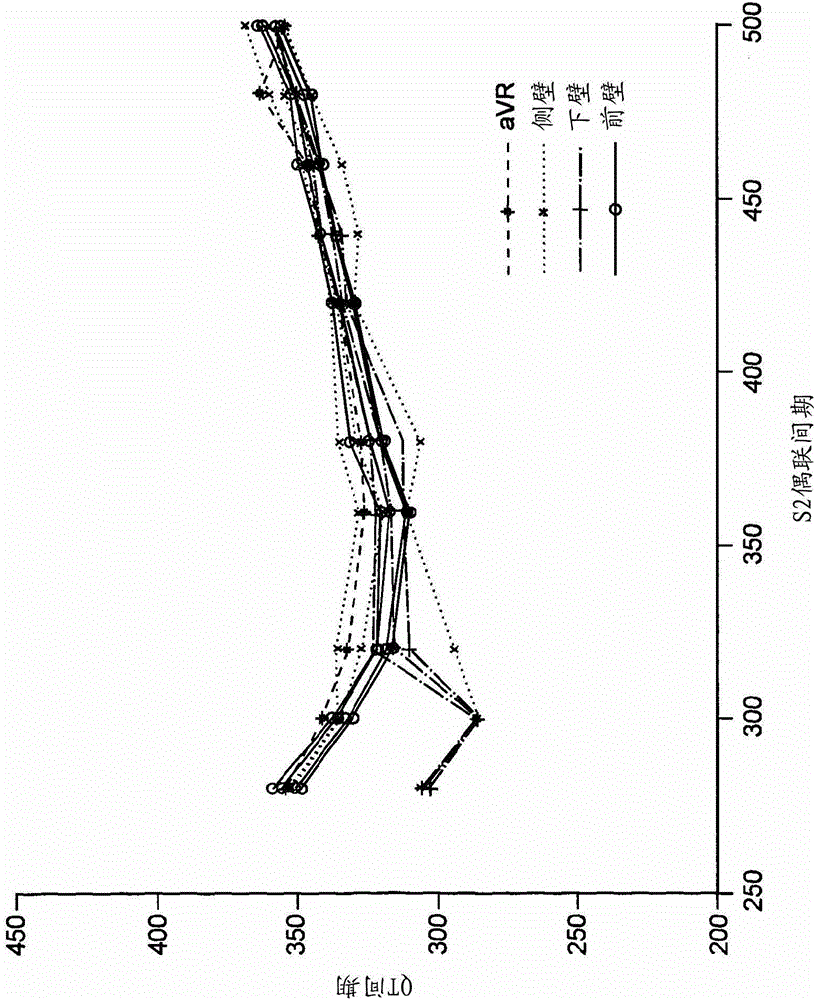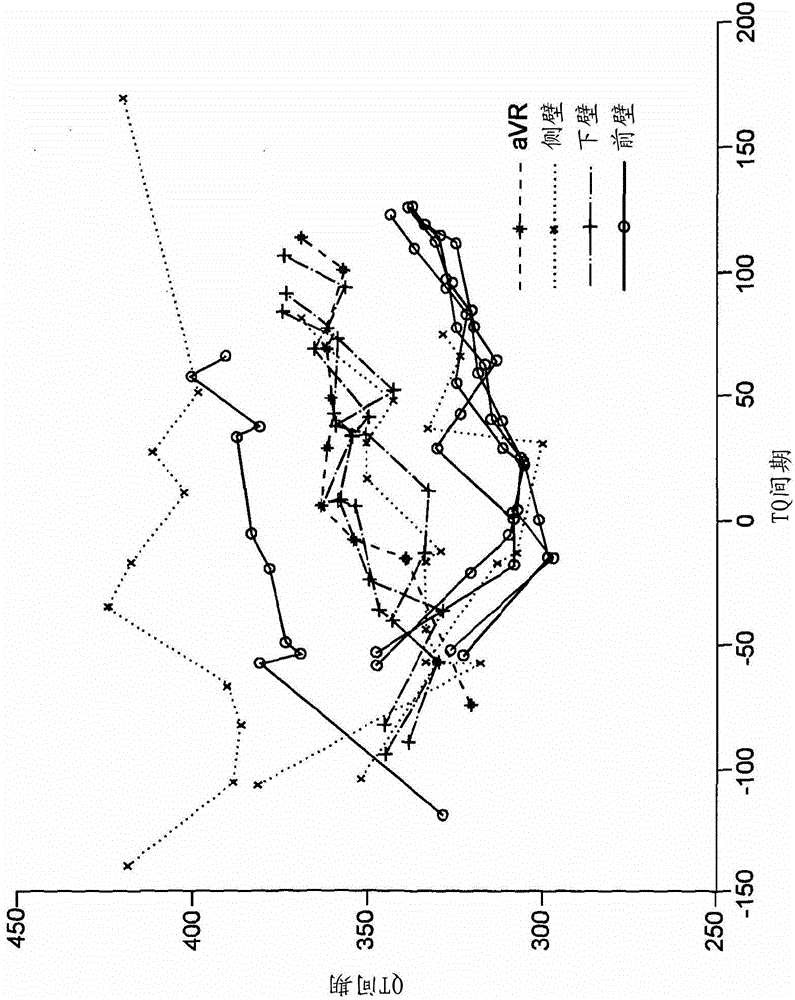Method and apparatus for evaluating cardiac function
A technique for cardiac and arrhythmia, applied in the field of computer programs using information provided by electrocardiography, to solve problems such as routine evaluation not being preferred
- Summary
- Abstract
- Description
- Claims
- Application Information
AI Technical Summary
Problems solved by technology
Method used
Image
Examples
Embodiment 1
[0098] 1. Embodiment 1: inclusion criteria:
[0099] ●Patients who are being considered for new ICD implantation with NYHA class III-III symptoms of heart failure and documented left ventricular dysfunction.
[0100] 2. Example: Exclusion Criteria
[0101] ●Unstable coronary artery disease, which may require percutaneous or surgical intervention
[0102] ●Requirement for sustained cardiac pacing (eg, high-grade AV block or for cardiac resynchronization)
[0103] ●Recent coronary artery bypass surgery (within 3 months)
[0104] ●Recent valve surgery (within 3 months)
[0105] ●Recent myocardial infarction (if documented by appropriate ECG and biochemical analysis) (within 3 months)
[0106] 2.1 Main outcome measure: ICD therapy for ventricular arrhythmia or death during 2-year follow-up period
Embodiment 3
[0107]3. Example 3: A study of patient practices incorporated after the analysis from Examples 1 and 2
[0108] A) Subjects were divided into two groups studied in the post-absorption state (the first group were patients determined to be at high risk of arrhythmia; the second group were patients determined to be at low risk of arrhythmia ).
[0109] B) Proper aseptic technique is used throughout the process.
[0110] C) Skin ECG leads are applied in standard locations and connected to a suitable electrophysiological recorder. (Bard system used to study standard 12-lead ECG locations)
[0111] D) Select the appropriate transvenous route and insert the 6F venous sheath using the Seldinger technique.
[0112] E) A suitable electrophysiology catheter, such as a 6F Josephson tetrode catheter, is sheathed.
[0113] F) Steering the catheter into the right ventricular apex using fluoroscopic guidance, obtaining a stable position in the right ventricular apex.
[0114] G) Obtainin...
Embodiment 4
[0120] 4. Example 4: Pilot Study Using Regional Repolarization Instability Index on Myocardial Heterogeneity and Prediction of Ventricular Arrhythmias and Death
[0121] 4.1 Method
[0122] 4.1.1. Subjects have undergone programmed electrical stimulation (PES) between January 1, 2005 and July 31, 2009 by screening the departmental audit database as a clinical risk stratification for ICD implantation Patients with a history of IHD who were part of the IHD and had had a CMR scan within 6 months of their PES were identified. This identified 43 patients. PES recording was not available for 9 patients and an additional 4 patients were excluded because only 6 lead ECGs had been recorded. Of the 30 patients whose PES data were available, 1 could not be analyzed because their drive loop length (DCL) was changed midway through the protocol. The CMR data of these 30 patients are then sought. LGE images for 3 patients were not acquired due to difficulties with gating (1) and breath...
PUM
 Login to View More
Login to View More Abstract
Description
Claims
Application Information
 Login to View More
Login to View More - R&D
- Intellectual Property
- Life Sciences
- Materials
- Tech Scout
- Unparalleled Data Quality
- Higher Quality Content
- 60% Fewer Hallucinations
Browse by: Latest US Patents, China's latest patents, Technical Efficacy Thesaurus, Application Domain, Technology Topic, Popular Technical Reports.
© 2025 PatSnap. All rights reserved.Legal|Privacy policy|Modern Slavery Act Transparency Statement|Sitemap|About US| Contact US: help@patsnap.com



